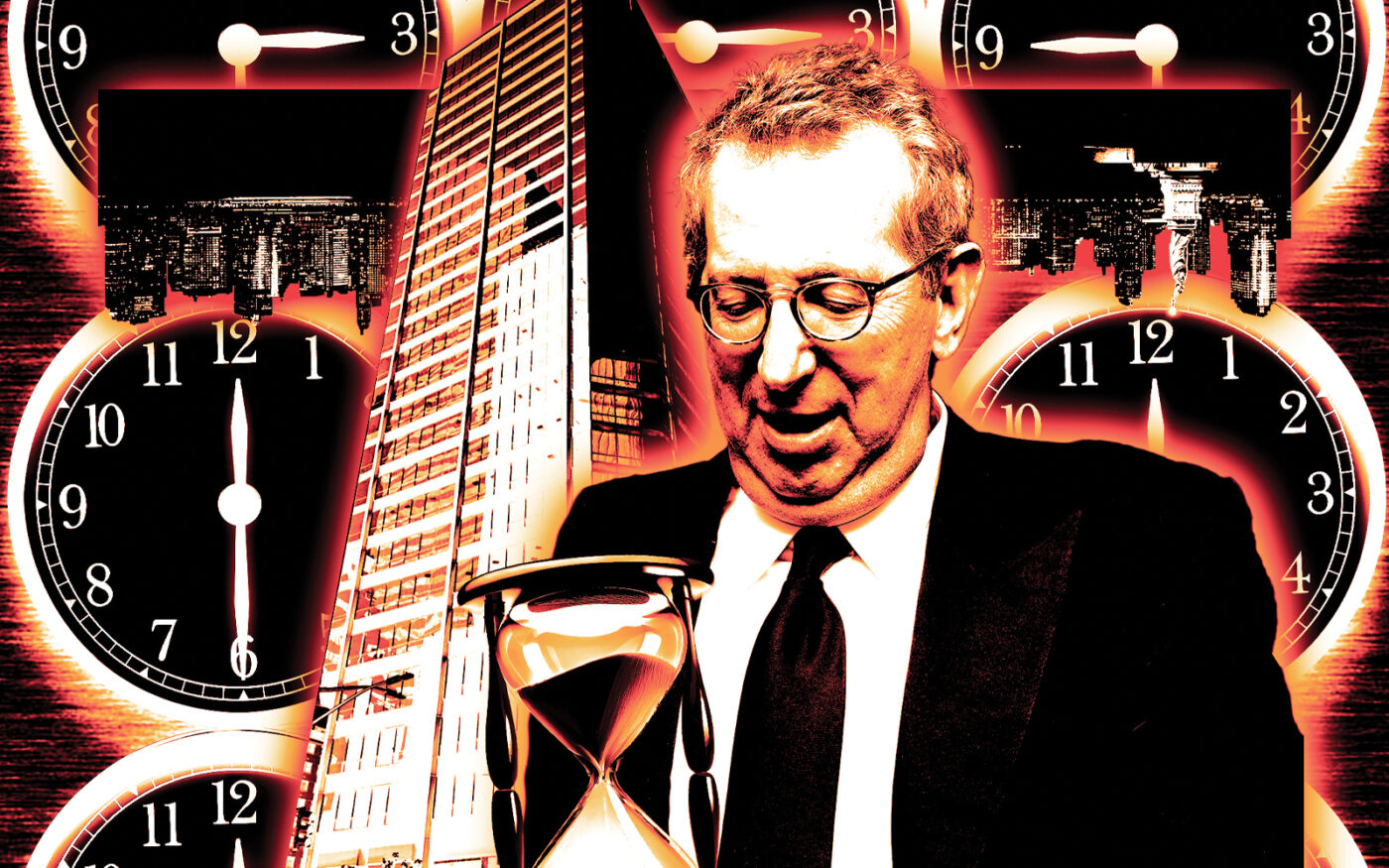For five years in the 1990s, Bill Rudin held onto a vacant 1960s office building at 55 Broad Street in the Financial District, hoping the world would change.
It did: New York introduced tax incentives that drew businesses to Lower Manhattan and allowed developers to convert some commercial buildings into apartments. Rudin kept 55 Broad for three more decades before selling it last year for $172.5 million to Silverstein Properties and Metro Loft Management, who plan to convert it to housing.
Now Rudin is again in a holding pattern. His company, Rudin Management, is waiting to see if the city and state will make changes to allow more office-to-residential conversions.
His target this time is 845 Third Avenue, a 21-story office building constructed in 1963. The property has more than 100,000 square feet of office space available, but few prospective tenants are biting. Converting it to rentals would make sense for Rudin and the housing-starved city, but the project doesn’t pencil out yet.
“You have to be patient,” Rudin said in an interview. “See where the world goes, see what happens up in Albany, see what happens with interest rates.”
Rudin is far from alone in this predicament, but is better situated than many owners of failing office stock in this era of elevated interest rates and remote work. Facing foreclosure, some are simply returning their keys to lenders. Others are trying to avoid that fate by upgrading lobbies and adding increasingly requisite amenities to lure tenants.
It remains to be seen if New York City’s housing shortage and half-empty office properties will inspire city and state lawmakers to incentivize conversions and make more of them legally possible by changing zoning and building codes.
“Pressure will build when you have empty buildings that are not desirable alongside strong residential demand,” said Michael Stark, partner and co-head of PJT Park Hill’s real estate group. “After a while, it is tough to ignore see-through office buildings in New York.”
Obstacles aplenty
Hypothetically, hundreds of older office buildings in New York could be converted into housing.
A report published by the National Bureau of Economic Research last year identified 3,118 candidates throughout the U.S., including nearly 600 in New York City. But caveats cloud that vision.
Not every building can easily be converted, given the large floor plates common in office properties and the location of mechanical equipment and elevators. Deep office floor plates limit exposure to natural light — a necessary component for housing.
Moody’s took a dim view of conversions in 2022, calling them a “fringe trend.” Of 1,100 buildings the firm tracks, only 35 were viable conversion candidates, its analysis concluded.
The profit margins for conversions are small and rely on developers being able to scoop up office buildings at steep discounts from their pre-pandemic values, according to the report. RXR Realty’s Scott Rechler said developers are generally seeking a basis of $200 to $250 per square foot for conversion properties, but that ultimately the pricing needs to get closer to land costs.
“Pressure will build. After a while, it is tough to ignore see-through office buildings in New York.’”
Getting these projects to pencil out is further complicated by affordability requirements that politicians may demand for the new housing.
New York Gov. Kathy Hochul has proposed a tax incentive for projects in which 20 percent of units have below-market rents. All told, the weighted average of the income restrictions for the affordable units must not exceed 80 percent of the area median income, or $101,680 for a family of three.
A similar proposal she made last year drew little interest from developers, who said its benefits were not worth its costs.
The National Bureau of Economic Research report found that in a 200-unit project with 20 percent set aside for tenants making 80 percent of the area median income, the internal rate of return drops from 16.8 to 12.1 percent.
Meanwhile, the city is moving forward with zoning changes that would expand the universe of office buildings that could be converted to housing. For the most part, properties constructed after 1961 in the city cannot be turned into residential space. The city plans to move that threshold up to 1990.
Even if that proposal is approved, office buildings with a floor-area ratio above 12 — meaning the building is more than 12 times the size of the lot — would not be eligible. The state would need to lift the city’s FAR cap on residential space, but that proposal has failed to gain traction in the legislature.
Some property owners have tried to “change their stripes” to evolve with market conditions, Stark said. For example, post-pandemic, many retail owners got into logistics, while many office landlords focused on life sciences.
But it usually takes elected officials longer to adapt with them. In New York City, the glacially slow rezoning of manufacturing districts to residential continues to this day, decades after the city lost more than 90 percent of its industrial jobs.
Owners of aging offices are hoping for a faster response to the post-pandemic landscape.
Choose your own adventure
Some of the city’s best-known office landlords, including RXR, Blackstone, Brookfield and Savanna, have handed the keys back to lenders rather than face foreclosure. In December, Savanna opted for a deed-in-lieu of foreclosure at 1825 Park Avenue, surrendering the Harlem building to TPG Real Estate Finance.
Savanna had tried to sell the property for $75 million, but couldn’t find a buyer.
Lenders taking over an office building typically get a building worth less than its debt, but still want to recover as much money as they can from a sale. At the same time, most don’t want to hold properties to get a better price down the line. For conversions, patience is often essential because it can take years for the remaining tenants to be cleared out.
Anoop Dave, CEO of Victrix, a firm that specializes in adaptive reuse projects, pointed to cases where a building is underwater and maybe 30 percent occupied. Lenders are not keen to refinance such properties, but foreclosing is also a bad option: Potential buyers hoping to convert the property need it to be empty, and demand a steep discount because of the existing tenants.

(Getty Images, PJT Park Hill, LinkedIn/Anoop Dave)
“Things start going into a bizarre stalemate,” Dave said. “The lender says, ‘Hey, we hope to sell this for 50 percent off of our debt.’ That is a tough pill to swallow. The market says, ‘We want an additional 25 percent off because there is going to be a lot more complexity and cost to deal with these tenants you have.’”
Dave noted that carrying costs are much higher for adaptive reuse projects than for new development, so owners typically don’t have the luxury of waiting for tenants’ leases to run out or for lawmakers to facilitate conversions.
Some property owners, facing the difficulty of reworking their loans and the complexity of conversions, are selling their buildings floor by floor as office condos. Michael Rudder of Rudder Property Group told the New York Post that owners can profit more that way than by selling the entire building.
“While office condo pricing is way down — by 30 percent to 50 percent — it’s still much higher than what office buildings are selling for,” he told the tabloid.
Dave said he has been outbid on conversion projects in New York and Washington, D.C., by firms that have little experience with such work. Sellers are still grappling with the reality of what they can get for properties.
“You have to be empathetic to the seller’s situation, while also protecting your investors at the same time,” he said.
RXR and Ares Management are banking on more owners coming to terms with depressed property values. Last month the pair launched a $1 billion fund to buy up office buildings, the Financial Times reported. The partners are targeting buildings that are Class A but not new.
“Higher-quality buildings, over time, you’ll have the investment in those buildings,” Rechler said.
Other funds targeting struggling commercial properties have sprouted up as some sellers have started to yield on pricing, according to the Wall Street Journal.
Stark is skeptical.
“We really haven’t seen people scooping up these office buildings. The office markets have reflected a flight to quality,” Stark said. “I think people assume that at a certain price, maybe things become attractive.”
“Sometimes things are cheap for a reason,” he added.
Looking ahead
The city’s planned changes to zoning to ease office conversions should play out over the next year, as Mayor Eric Adams’ City of Yes for Housing Opportunity text amendment makes its way through public review.
In the meantime, owners have enrolled 46 buildings in the city’s office conversion accelerator to help them figure out a path forward. Four of them have already started work and are expected to create 2,100 housing units.
While the governor’s budget plan calls for lifting the city’s residential FAR cap and a tax incentive for conversions, there is no guarantee that either will be in the final spending plan or approved separately during this legislative session. Both were rejected by lawmakers last year.
“If we just assume nature’s going to take its course, without putting policies in place, it can be a 20-year problem,” Rechler said.
In any event, the RXR chief said, conversions will not be a “silver-bullet solution.”
“We need to adapt as a city to this new reality,” he said, citing the permanence of hybrid work. “It is not about any particular project.”
Rudin wouldn’t give a timeline for 845 Third Avenue — one of many troubled office buildings on that Midtown East corridor — as he pushes for city and state policies to allow its conversion.
“Real estate’s a long game,” Rudin said. “We built that building in the early ’60s. We can wait it out for a long time.”

